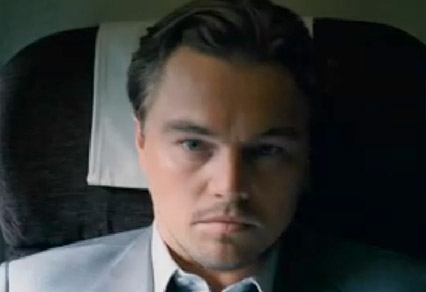Film Analysis: The shortcomings of representing the unpresentable in Inception

Image source: The First Post
Note: Below is an excerpt of a film analysis of Inception I wrote for Vodule, a new collaboration that focuses on the concept of volume and modularity in emerging media.
Spoiler alert: this is a film analysis, meaning an in-depth review that gives away key moments of the film.
Written by Eduardo Navas
Inception is defined as “The establishment or starting point of an institution or activity.” In the film Inception, the term means “the introduction of an idea in someone’s mind.” Dominic Cobb (Leonardo DiCaprio) is a master at manipulating people’s dreams. He is able to introduce an idea deep into a person’s unconscious. The idea will take over the individual’s reality and perhaps even push him or her to the edge of sanity. The individual may question actual reality and consider the dreamworld real, not the material world.
Inception was written and directed by Christopher Nolan, who consistently plays with the concept of time in multiple parallels of reality. He did this with Memento, Batman Begins, and The Dark Knight. But Inception, as original as it may appear, in effect, is far from being itself an introduction of a new concept that may take over film form and ask that film as a medium be redefined. Nolan by no means may be claiming to do this with Inception, but serious filmmaking is at its best when it becomes that which it proposes. This is known in the arts as the sublime: to present the unpresentable–to present the possibility of comprehending the incomprehensible. This is the ultimate space of exploration in aesthetics. Inception, as respectable as it may appear, falls short in this important aspect. Why this may be so is worth considering.
Read the complete text at Vodule








